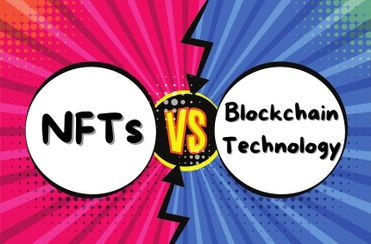
NFT utilizes the same principle as blockchain, which holds data together. Programmers can so collaborate with the artists who created the million-dollar chimpanzees and cat drawings. NFTs are ideal candidates for “administering” blockchains since they are digital tokens that include important and considerable amounts of personal information. If somebody asks us to define NFT games in the simplest terms possible, we will say that it is the combination of three elements. To create it, you combine NFT art, blockchain technology, and gaming.
In addition, how do blockchain technology and non-fungibles affect games? – In improbable ways. Digital collectibles known as NFTs are the heirs to Bitcoin and other enormously popular cryptocurrencies. Recently, the NFT game development revolution. Thanks to the Game-Fi industry, a growing marketplace for avid gamers and game developers to reap financial rewards. We assume you are still trying to define what Game-Fi is with the help of your mental yardstick. Here’s a small catch for you in this case:
Difference between NFT and blockchain
The primary distinction between NFT and blockchain is how NFT stores its data; blockchain does not allow for this. Nobody can get into the system since it safeguards all of its information using a blockchain platform or some other platform. However, blockchain is a system that holds data that no other individual can retrieve.
Security
The primary distinction between the two words is that they each have unique security challenges. Blockchain maintains strict internal security as well as external security. Nobody can break into it or damage it. However, NFT which is used in NFT game development is a file that has been digitally altered to resemble art, media, or any other source. Additionally, anyone can reach it, making security a need.
Information Storage
Your store information for any digital data in NFT. Additionally, we can deposit and save. NFT can be profitable as well. so, you can work and invest. Since blockchains are books and records, they will keep your information secure and prevent the transfer of any additional goods or objects.
Physical Access
NFT requires digital applications, hence we cannot use them physically. Blockchain records can be both physical and digital. Due to its popularity and ease of use, blockchain game development is now accessible to everyone. The computer safeguards the specifics and every other detail. Therefore, we can view files manually, and can change them to digital format. The crucial point is that you can store the file on either digital web before doing so. Everyone will be able to easily track the product. So we can store all of the issues’ answers and queries safely in a locker by blockchain. Only the controller will have access to the locker.
Trade
Like other cryptos, we cannot trade NFT. It is neither trackable nor reachable, even though it is physically accessible. Blockchain is trackable, and it can securely store a variety of data. We can retrieve all The data.
User Access
The biggest benefit of NFT is that it gives the user access to all of the data’s copyright. Whereas Blockchain features a high-security vault that enables it to keep data and information safe inside of itself.
NFTs and the Blockchain Gaming Industry’s Future
Even though there are benefits to using NFTs in the gaming business, there are also significant problems. Above all, NFTs need to be made more appealing and understandable for regular consumers who might not be good with technology. Given that NFTs have economic value, there is a possibility that a few of them may use exclusively theoretical assets. This feature can tempt players to purchase in-game goods to sell them later on for a profit as opposed to making proper use of the environment’s resources.
Despite these challenges, the potential for financial benefit in the gaming world will persuade many businesses without a blockchain emphasis to explore NFTs. They will most likely accomplish this by collaborating with independent blockchain projects that have shown to be successful.
Blockchain Game Development
The process of creating games using blockchain technology is known as blockchain game development. This gives users complete power over whatever digital goods they obtain or earn through games. All gaming assets and funds will remain the property of the publisher or developer.
Key Elements
In the meantime, participants in blockchain games maintain full ownership of their virtual goods, enabling them to freely exchange them with other participants. Sell them for actual money and possibly use them in different gaming worlds.
Modernizing the Digital Gaming Sector
The creation of online games has evolved into a separate industrial genre. The growth of blockchain apps in digital gaming over the previous five years has developed into a framework for holding game currencies for goods that you get in-game through worthwhile transactions. The cryptocurrency that we use in-game economies can be used beyond the game as well as in wallets.
By providing a trust-free atmosphere, blockchain technology promotes transparency in the ownership of these assets. As a result, the conventional game development economy, which was run by the industry’s top developers, is now decentralized.
Conclusion
NFT Game Development will be a great choice for you if you’re keen to develop a business idea that can last. But on the flip side, it does have some obstacles as well. For instance, NFTs must, above all, be made more enticing and understandable to ordinary consumers who may not have a technical mind. This possibility can entice players to buy in-game goods in the anticipation of later selling them for profit instead of making proper.
Despite all the challenges, the profit potential is so high that it will encourage additional non-blockchain-focused brands to test. Likely by collaborative partnerships with the third party. Additionally, the general popularity of gaming will probably contribute to further accelerating NFT infrastructure improvements and encourage the creation of novel solutions that open up widespread adoption.
